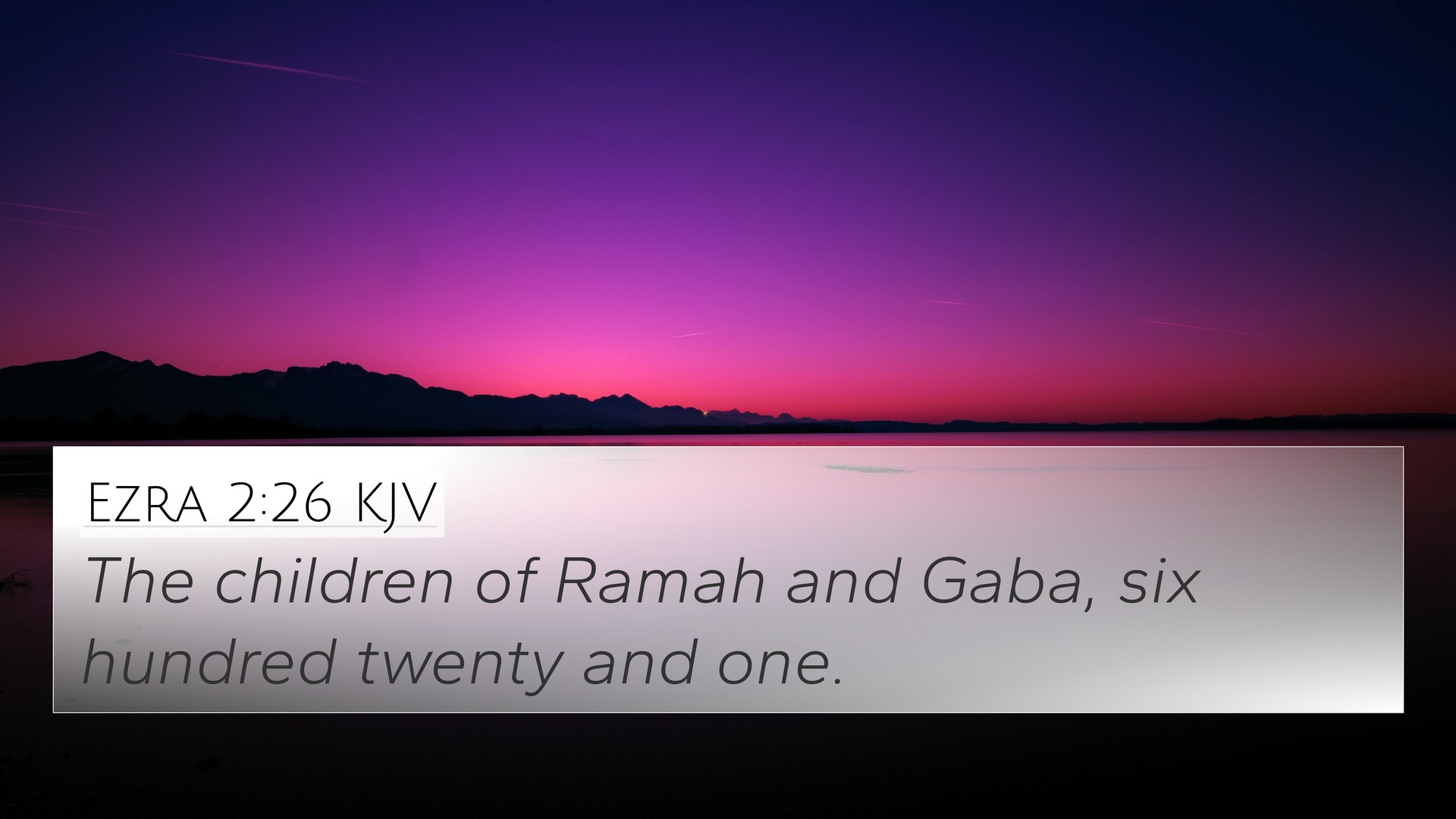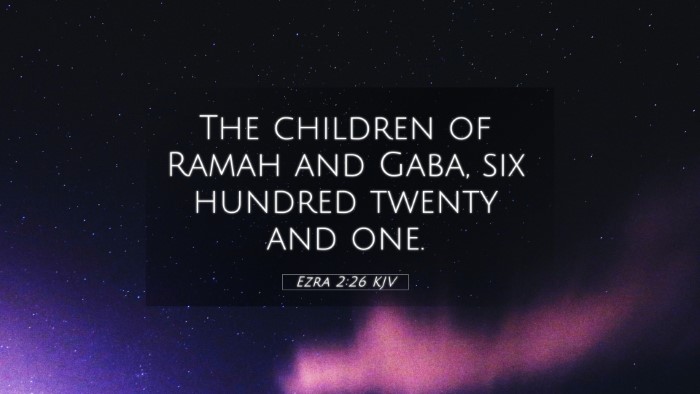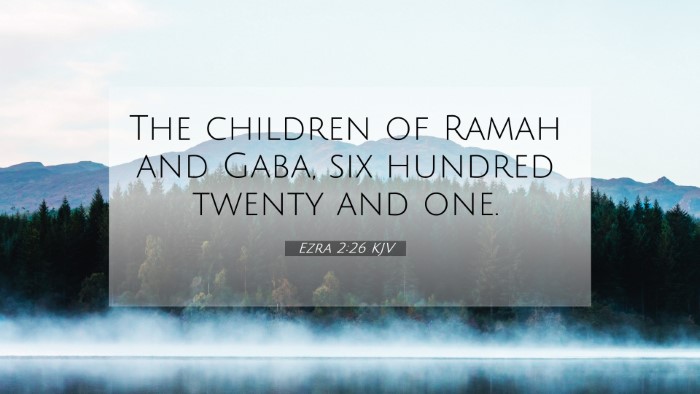Understanding Ezra 2:26
Ezra 2:26 states: "The children of Ater of Hizkijah, a hundred and twenty." This verse is part of a larger passage that enumerates the returning exiles from Babylon, detailing their heritage and the number of people returning to Jerusalem to rebuild their lives and their temple.
Context and Background
The Book of Ezra recounts the return of the Jewish people from Babylonian captivity after the decree of Cyrus, which initiated a significant transformation in their spiritual and communal lives. The genealogies served to establish the rightful lineage of those who were returning and their place within the worship and community of Israel.
Commentary Insights
Matthew Henry: Henry emphasizes the importance of the names listed in the genealogy as they represent the fulfillment of God's promise to restore His people. Each name reflects a personal connection to the covenant and a collective return to worship.
Albert Barnes: Barnes comments on the precision of the enumeration, which highlights the organization and unity of the returning people. He notes that the mention of families and their numbers underscores the community aspect of their return and the importance of each individual's contribution to the rebuilding effort.
Adam Clarke: Clarke draws attention to the lineage of Ater and the historical context of the families mentioned. He explains that understanding these family ties provides insight into the social structure of the returning exiles and emphasizes the significance of maintaining their identity amid new challenges.
Thematic Connections
The children of Ater represent continuity and identity for the Jewish people. This theme connects to various passages in the Bible where genealogies play a crucial role, emphasizing God’s faithfulness in preserving a remnant.
Cross-References
- 1 Chronicles 5:29: Discusses the genealogies and the importance of clan preservation.
- Nehemiah 7:20: Provides additional context to the number of returnees.
- Ezra 1:1-4: The decree of Cyrus that initiated the return of exiles.
- Isaiah 44:28: Prophecy related to Cyrus and Israel’s restoration.
- Jeremiah 29:10: Promises God made regarding the 70 years of captivity.
- Matthew 1:12: Genealogy of Jesus showing the continuity of the royal line.
- Hebrews 11:9-10: By faith, Abraham looked forward to the city of God, indicating a theme of spiritual restoration.
Importance of Cross-Referencing
Utilizing a Bible cross-reference guide can enrich one’s understanding of scripture, revealing the interconnectedness of biblical narratives. Cross-referencing Biblical texts enables deeper insight into the themes of restoration, identity, and God's faithfulness as witnessed through scripture.
Tools and Methods for Cross-Referencing
There are various tools for Bible cross-referencing available, including concordances, topical Bible studies, and online resources. Here are some methods to effectively cross-reference:
- Start with a Bible concordance to find key themes connected to Ezra 2:26.
- Use a Bible reference resource that organizes related scriptures.
- Identify connections between the Old and New Testament to see how themes evolve.
- Utilize a cross-reference Bible study to compare verses side by side.
Conclusion
Ezra 2:26 serves as a powerful reminder of the importance of community, heritage, and God's promises. By examining the lineages and their significance through cross-referencing, we can appreciate the enduring narrative of redemption woven throughout Scripture.




